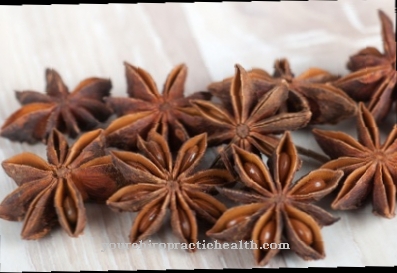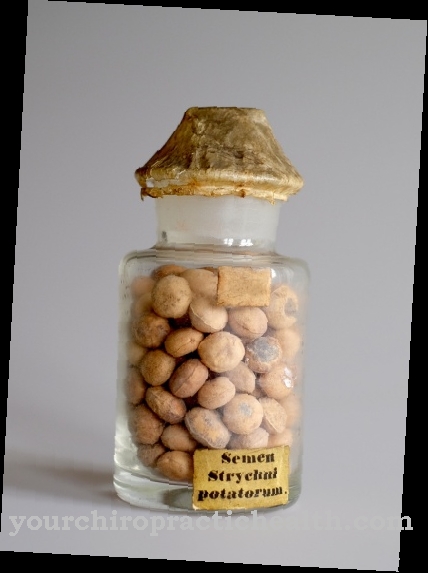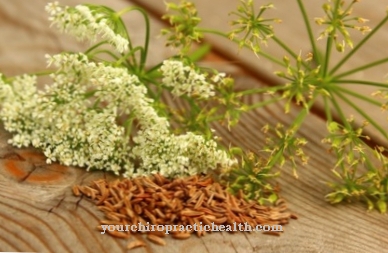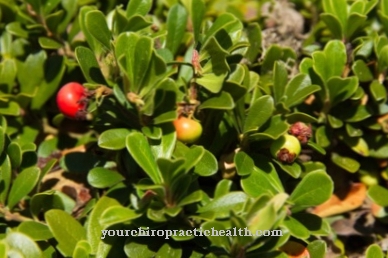The Field scabious first appears in the herbal books of Lonicerus, Bock and other doctors of the 16th century. The medicinal plant, which was very well known at the time, was successfully used against various ailments. Nowadays it has almost been forgotten - which is apparently due to the fact that there are medicinal herbs that are more medically potent for most of its areas of application.
Occurrence and cultivation of the field scabious

The herbaceous field scabious of several years becomes 30 to 80 cm high and has a robust taproot. Its stem is covered with stiff, protruding hairs. It has gray-green matt and pinnate leaves that are arranged opposite one another. Their cup-shaped blue-pink inflorescences are surrounded by an outer calyx formed by bracts and covered with rough hairs and 50 individual flowers.
The ancient medicinal plant occurs all over Europe and Asia at altitudes of 1,500 meters. In Central Europe it is found on meadows, semi-dry lawns and extensively farmed fields. The field scabiosa prefers sunny and semi-shady locations and dry, light and nutrient-poor sandy soils.
Their leaves and flowers are collected in July / August. The fresh, young leaves are ideal as an ingredient in wild herb salads, soups and omelets. If they are too bitter for you, you can put them in lukewarm water for two hours beforehand. The flowers of the scabies herb are also edible. The field scabious can easily be confused with the pigeon scabies.
Effect & application
The field scabious contains bitter substances, tannic acid, tannins and triterpene glycosides. It has a urinary, blood-purifying, phlegm-releasing, metabolism and digestive effect. Thanks to their astringent properties, swellings go down quickly if they are treated externally with field scabious poultices. Their anti-inflammatory effects apply to internal infections as well as external ones (wound infections).
The leaves and flowers of the medicinal plant are medically effective. The leaves can be used fresh or dried to make tea. The medicinal plant can be used for internal and external treatment. To make arable scabious tea, the patient pours a teaspoon of fresh or half a teaspoon of dried leaves with a cup of hot water and lets the tea steep for five to ten minutes before straining it. It is advisable to drink two to three cups a day.
You can also make the tincture yourself. To do this, the user simply douses the flowers and / or leaves in the screw-on jar with double grain so that they are completely immersed in the alcohol. The sealed jar must then be stored for two to six weeks, depending on the desired intensity. Then the liquid is strained through a coffee filter. From the arable widow's flower tincture, 10 to 50 drops are taken one to three times a day.
Tea and tincture should only be used internally as a 6-week cure. After a treatment break of several weeks, the application can be continued for a further 6 weeks if necessary. Meadow scabiosis is also used externally as a tea and (diluted) tincture. To treat open wounds, burns, bruises, swellings and skin rashes, the user wets compresses with tea or tincture and places them on the area of skin to be healed.
The herb itself can also be used as a topping. It used to do this to soothe anal itching and help fight infections caused by roundworms. Washings and baths are just as effective. To do this, the patient simply pours the decoction or the diluted tincture into the bath water. In the past, doctors also used the plant in ointments. In homeopathy, original tincture, teep (fresh plant trituration) and globules are used for treatment.
The original tincture, which is supposed to stimulate the flow of speech and is obtained from fresh flowering plants, is taken twice a day. The tea - roots and fresh field scabious leaves are used for this - is consumed as 1 tablet 2 to 3 times per day. The globules are available, for example, in potencies D6, 7, 9, 10, 12, 15, 30, 60, 100 and 200. The patient lets 5 globules dissolve on the tongue 3 times a day. In acute complaints, the 5 globules are taken every hour. All forms of administration of the field scabious are well tolerated and have no side effects.
Importance for health, treatment & prevention
The medicinal herb field scabious, which has been known for centuries, has a wide range of applications, but only a small part of it is still used today. The plant's anti-inflammatory effects are evident in the treatment of rashes, eczema, seborrhea, ulcers, abscesses and boils. It can also be used to effectively treat minor skin problems such as acne.
As a medicinal tea, the active ingredients of the field scabious help with sore throats, coughs and diseases of the lower respiratory tract (bronchitis). In the case of urinary tract diseases such as cystitis, they offer rapid relief thanks to their urinary effect. In addition, the old natural remedy helps with constipation and loss of appetite.
In Bach flower therapy, Knautia arvensis is used as a means to relieve anxiety. In earlier times, field scabious is even said to have cured epilepsy. Homeopathy usually uses them in the potencies D2 to D12, if they are to be used to cure digestive problems, airway inflammation and skin rashes as well as acne. It also helps patients with catarrh, throat infections, coughs and listlessness.








.jpg)



















